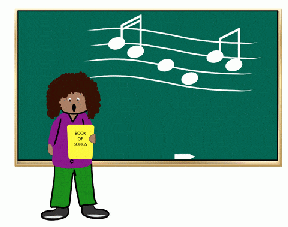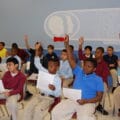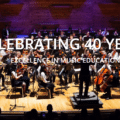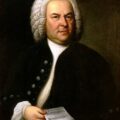Jul 26, 2016
How Shall We Study Music?

Last week I was given the privilege of speaking at a conference on the campus of Princeton University presented by the New Jersey Principals and Supervisors Association and the Foundation for Educational Administration. The three-day event was underwritten by the Geraldine R. Dodge Foundation.
The conference theme, Using Arts-Infused Instruction to Enhance NJ’s Learning Standards, provided all of the artist-speakers with an opportunity to advocate for just how their art form can be used to advance the core curriculum standards of New Jersey’s Public Schools.
I am product of public education. While it’s true that I received a very intense music education at St. Peter’s Choir School in Philadelphia, grades 4-7, the remainder of my secondary education was in a public school – Abraham Lincoln High School. The musical studies and activities offered at Lincoln were typical for the 1960’s.
The emphasis was on teaching music performance. There were two concert choirs, a chamber choir, two small chamber choral ensembles, two concert bands, a marching band, a jazz band, two orchestras. . .and an annual musical. Sounds like a lot, doesn’t it? But, for 5,000 total students, these ensembles involved a bit more than 500 students or 10% of the student body.
What was atypical at Lincoln, compared to any of Philadelphia’s other high schools at the time, was the presence of Saul Feinberg, my mentor. Using the two-year general music requirement, Saul taught aesthetic music listening skills (as opposed to music performance listening skills) to the remaining 90% of the student body.
How should we teach music? Music instruction offered in schools should ideally mirror the three basic musical behaviors – creating (composing or improvising), performing and listening (from an aesthetic viewpoint.)
In a perfect world, all students in school would receive instruction in composing/improvising, performing and listening. Each year, from Kindergarten through Middle School, very specific standards could be set for each grade level.
For example, by the end of 1st grade, every child will: be able to improvise in song or on an Orff xylophone a simple ostinato (creation); be able to sing a simple melody transmitted in Kodaly hand signals (performance); be able to recognize a simple ternary form (listening).
Such a curriculum would produce a musically literate society, capable of performing, reading and inventing music – and most importantly – emotionally connecting with and appreciating, as listeners, the greatest music our society has produced regardless of genre – classical, jazz, pop, world or era – å_from medieval to the present.
But we don’t live in an ideal world. And in the very real world of schools, many music curriculums are entirely performance oriented or nearly so. Music education means: little children with violins in hand; kids singing in choirs and playing in bands; and performing in annual Broadway shows. And all of that is very important, and not to be taken for granted where it exists – given the cuts to arts programs that we have experienced in recent decades.
But, short of offering comprehensive music education (encompassing all three musical behaviors), might we consider offering aesthetic music listening to all students, performers and non-performers alike? This is what I proposed to my audience of Principals and Supervisors in Princeton.
We have some follow-up planned. Stay tuned.







